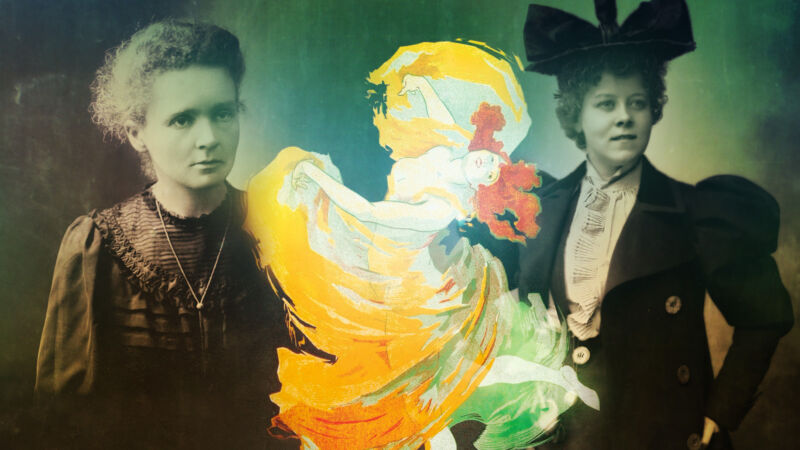Two visionaries: Marie Curie forged a friendship with dancer Loïe Fuller

Enlarge / Radiant: The Scientist, the Dancer, and a Friendship Forged in Light explores the lives of Marie Curie and Loie Fuller. (credit: Aurich Lawson / Getty Images)
Both the arts and the sciences flourished in Paris during the years of the so-called Belle Epoque at the dawn of the 20th century. This was when Nobel Prize-winning physicist Marie Curie and her husband, Pierre, made their breakthrough discoveries in radioactivity, discovering two new elements. At the same time, a modern dancer and pioneer in theatrical lighting named Loie Fuller, who was all the rage in Paris, dreamed of incorporating radium into her stage act. Science writer and communicator Liz Heinecke brings the lives of these two visionary women together in an illuminating new biography, Radiant: The Scientist, the Dancer, and a Friendship Forged in Light.
The details of Marie Curie's life are very well-documented and well-known. She left her native Poland and moved to Paris at 14 to pursue a degree in science, living in abject poverty while studying and conducting research. She met a chemist named Pierre Curie, and they began collaborating, eventually falling in love and getting married in 1895. The Curies had been married for six months when Wilhelm Roentgen discovered X-rays (winning the very first Nobel Prize in physics in 1901). Soon after, Henri Becquerel published his insight that uranium salts emitted rays that would fog a photographic plate in early 1896. Becquerel's uranium rays so fascinated Marie that she made them the focus of her own research.
With Pierre, she uncovered evidence of two new elements they dubbed polonium and radium. The couple shared the 1903 Nobel Prize in Physics with Becquerel for their work developing a theory of radioactivity-she was the first woman to be so honored. After Pierre's tragic death in a 1906 street accident, Marie developed new techniques for isolating radioactive isotopes from pitchblende and eventually succeeded in isolating radium in 1910. She won a second Nobel Prize (this time in chemistry) in 1911 for the discovery of polonium and radium. She remains the only woman to win the Nobel Prize twice and the only person to do so in two different scientific fields.
Read 20 remaining paragraphs | Comments